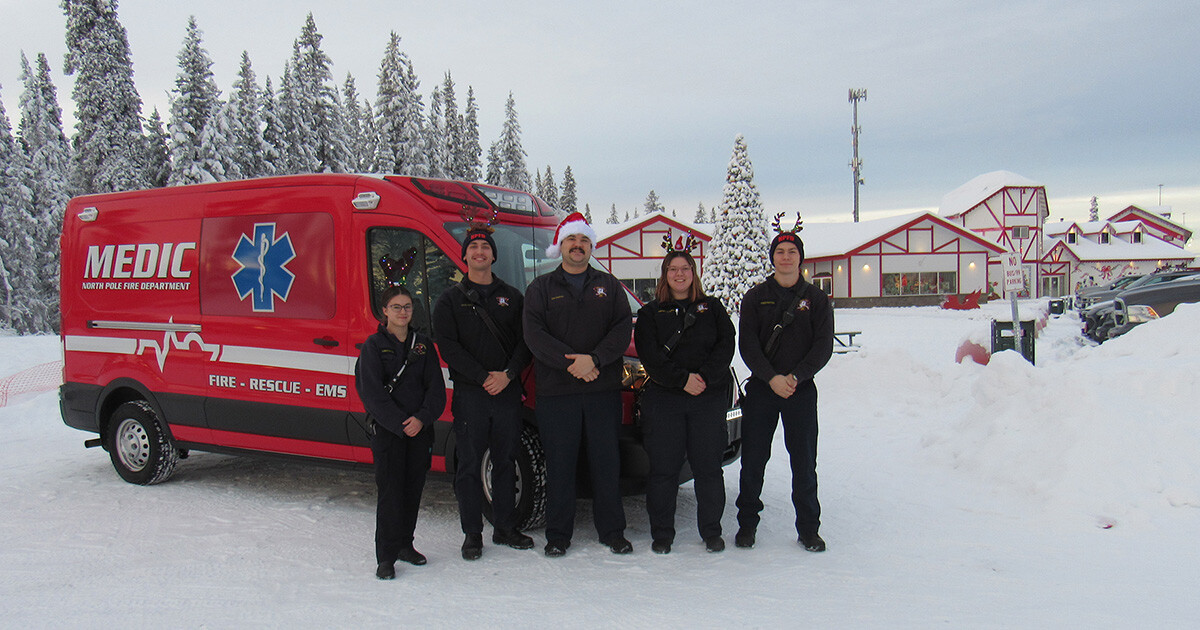Pulsara Around the World - April 2025
March Recap A New Integration: Improving Data Management, Streamlining Workflows, and Improving Care CoordinationOnly a few days ago, we announced...
3 min read
 Team Pulsara
:
Aug 02, 2018
Team Pulsara
:
Aug 02, 2018
![Solutions for EMS Recruitment and Retention are Hiding in Plain Sight [2018 EMS Trend Report Part 2]](https://www.pulsara.com/hubfs/amb-medics.png)
EDITOR'S NOTE: Last month, EMS1, Fitch & Associates, and the National EMS Management Association released their third annual EMS Trend Report, proudly sponsored by Pulsara. Because the articles and advice found within contain such critical subject matter, we've elected to publish each segment one at a time here on our blog. Read, enjoy, share, and take to heart the following information brought to you by the most prestigious thought leaders in EMS.
ABOUT THE AUTHOR: Jay Fitch, PhD, is a founding partner of Fitch & Associates, and has spent more than four decades serving the EMS community as a leader, author, speaker, educator and consultant.
--
Even though the race to recruit, hire, engage and retain EMS employees is as intense as ever, there are working solutions within reach for every agency.
Recruitment and retention of qualified EMS providers were identified in the 2018 EMS Trend Report as the top two issues facing the profession today. In the open comment section, one of the survey’s participants, paraphrased below, summarizes the problem well:
We need better career opportunities for individuals who want to make EMS their profession. Most EMTs and paramedics will move on to other positions in healthcare, such as nursing, lab/respiratory technicians, physician assistants or nurse practitioners. Others move on to careers in law enforcement or fire departments. There is a wide gap in what is expected of an EMS professional in terms of job skills, training, education, responsibility and dedication compared to what the industry pays. Until that is addressed EMS will continue to struggle to become a recognized and valued healthcare system with qualified and long-term experienced providers.
These issues shouldn’t surprise anyone. The race to recruit, hire, engage and retain employees is as intense as ever. Unemployment is low. Competition is high. Turnover is expensive: Overtime costs from being short-staffed, recruitment and onboarding expenses, and training costs all add up quickly. Some paramedic chiefs have told me the turnover costs exceed the annual compensation for each vacant position.
What is surprising is that there are unrecognized opportunities to address both recruitment and retention that appear to be hiding in plain sight. If we focus on these opportunities, then perhaps future EMS Trend Reports will find recruitment and retention no longer at the top of our list of concerns.
Innovative recruitment initiatives like the St. Paul EMS Academy in Minnesota, or the program developed by Metropolitan EMS in Little Rock, Arkansas, serve as examples of communities 2018 STATE OF EMS REPORT 18 19 2018 EMS Trend Report and organizations committed to new models of recruitment in EMS. Both have aggressively reached out to disadvantaged residents and removed barriers to completing training, for both EMT and paramedic levels. Tactics include reaching into the community, compensating personnel during training and developing strong mentorship programs to support candidates. The results are greater workforce diversity and connections to the community, as well as a strong affiliation and loyalty to the agencies that provide the opportunity.
Rigorous background screening tools can also improve recruitment and retention. Background checks should include an examination of criminal histories, driving records, sex offender registries and the U.S. Department of Health and Human Services Office of the Inspector General’s exclusion list.
But background checks are not enough. More advanced tools can assess the behavioral and psychological make-up of those we recruit as caregivers to ensure a cultural fit for the mission critical responsibilities of our organizations. Vetting candidates properly can positively impact organizational culture, avoid early separation and lower turnover.
As leaders of EMS agencies, it is up to us to make sure the era of hiring caregivers with “a patch and a pulse” is truly over.
Preparing caregivers to play a much larger role in managing the health and healthcare of our patients and communities is only half the battle. Leaders and organizations must change culture to retain those caregivers.
1. What makes employees stay?
2. What makes them leave?
The answer to both questions is leadership. It’s been said that the biggest reason employees jump ship is that they’re tired of working for lousy bosses. People are willing to put up with certain negatives if they enjoy who they’re working for. When employees are dissatisfied with their managers, retention plummets. Organizations must foster positive relationships between managers and their direct reports; communication, transparency, and respect are all part of this puzzle.
Wouldn’t it be great to see leaders invest in improving the work environment for paramedics and EMTs? It would start with offering better pay, shift schedules, deployment patterns and career development opportunities to help make sure they don’t burn out.
Beyond that, we need to pay attention to whether our caregivers are engaged and then find ways to engage them further. Providing employees or volunteers the necessary tools to succeed and grow, both personally and professionally, is critical to keeping caregivers involved. That can come in many forms, including educational opportunities, leadership development and mentoring.
Transparency and communication – both sharing information and actively listening – are essential to understanding the needs of our caregivers. We have more technologies than ever before to solicit feedback and monitor performance. But no app will ever beat what you can learn from visiting with crews at their stations, while they wait with a patient at the hospital or during a training session.
Developing a strategic and organization-wide culture that fosters engagement, recruitment and retention of the best EMS caregivers isn’t an overnight fix. Get started today. Don’t let the opportunities continue to hide.

March Recap A New Integration: Improving Data Management, Streamlining Workflows, and Improving Care CoordinationOnly a few days ago, we announced...

EMS providers and industry stakeholders can now improve data management, streamline workflows, and reduce the risk of double documentation through...

NORTH POLE, AK — It’s an open secret that there’s a lot of activity going on at the North Pole this time of year. Between checking the list twice,...